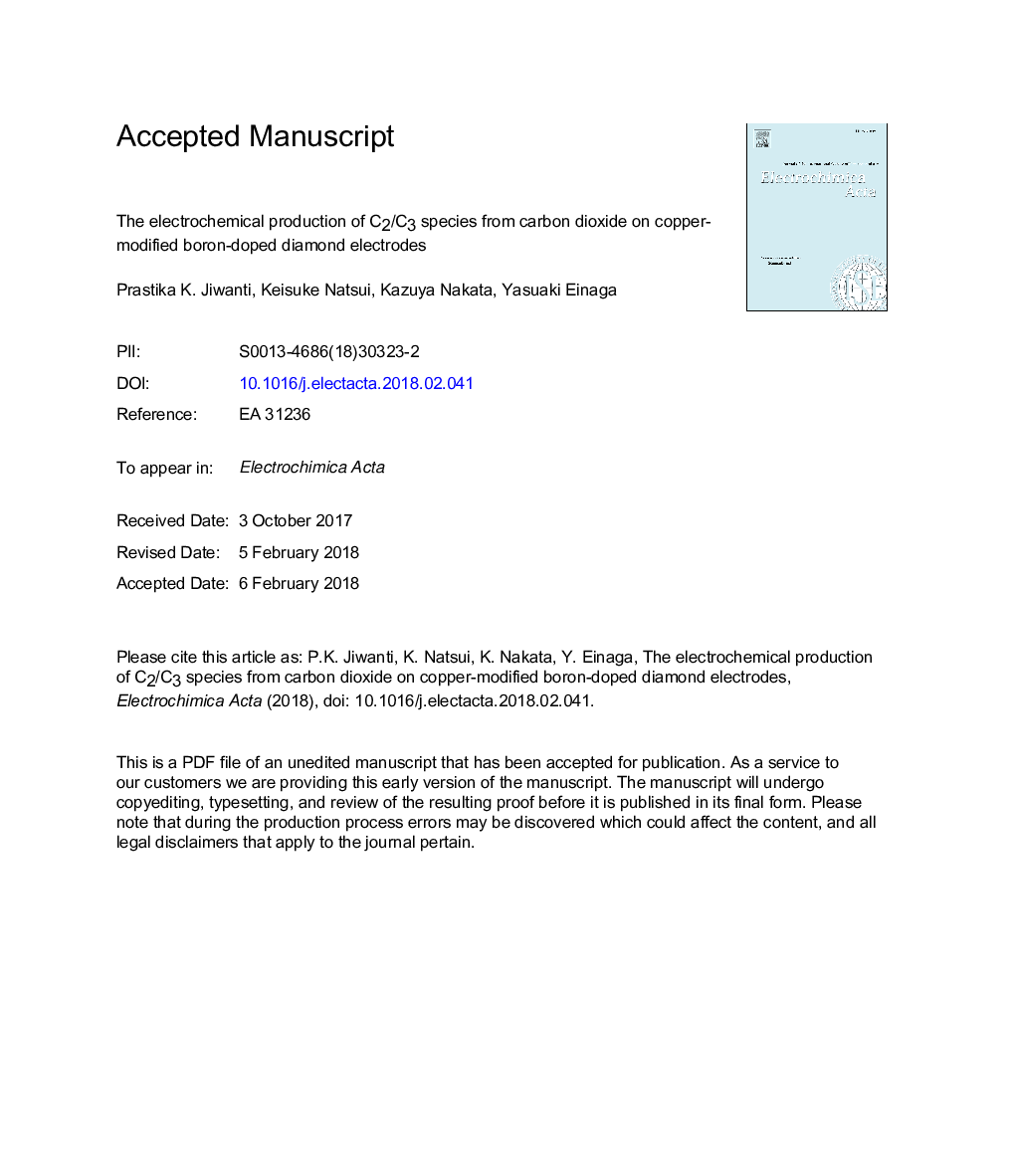| Article ID | Journal | Published Year | Pages | File Type |
|---|---|---|---|---|
| 6604058 | Electrochimica Acta | 2018 | 22 Pages |
Abstract
We report on the first observation of the production of C2/C3 species from the electrochemical reduction of CO2 at the surfaces of copper-modified boron-doped diamond (Cu-BDD) electrodes in aqueous media at room temperature and ambient pressure. The product distribution is dependent on the amount of deposited Cu and the applied potential. At low potential, â1.0â¯V (vs. Ag/AgCl), ethanol was observed as the main product with acetaldehyde and acetone as side products. The highest faradaic efficiencies obtained for ethanol, acetaldehyde and acetone were 42.4%, 13.7% and 7%, respectively. The Cu particles on the surfaces of the BDD electrodes remained stable, showing insignificant differences after the CO2 electroreduction process under these particular conditions. The efficiency dropped with increasing Cu deposition time and at high reduction potentials. Moreover, we present comparisons with a Cu plate and Cu-modified glassy carbon as working electrodes under the same conditions, which explains the specific behavior of the CO2 reduction process on the Cu-BDD electrode.
Related Topics
Physical Sciences and Engineering
Chemical Engineering
Chemical Engineering (General)
Authors
Prastika K. Jiwanti, Keisuke Natsui, Kazuya Nakata, Yasuaki Einaga,
